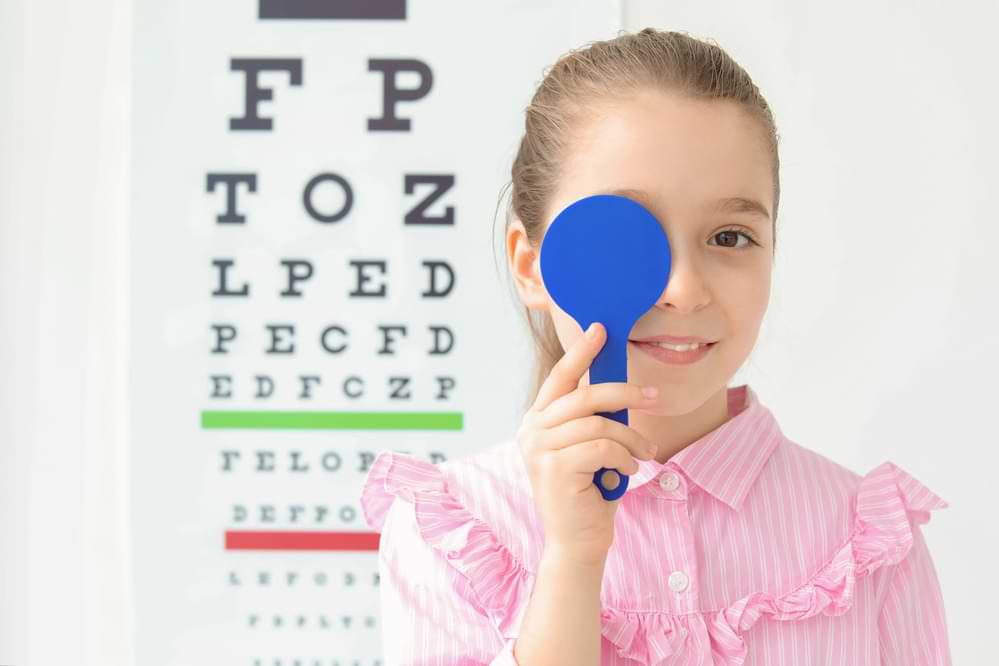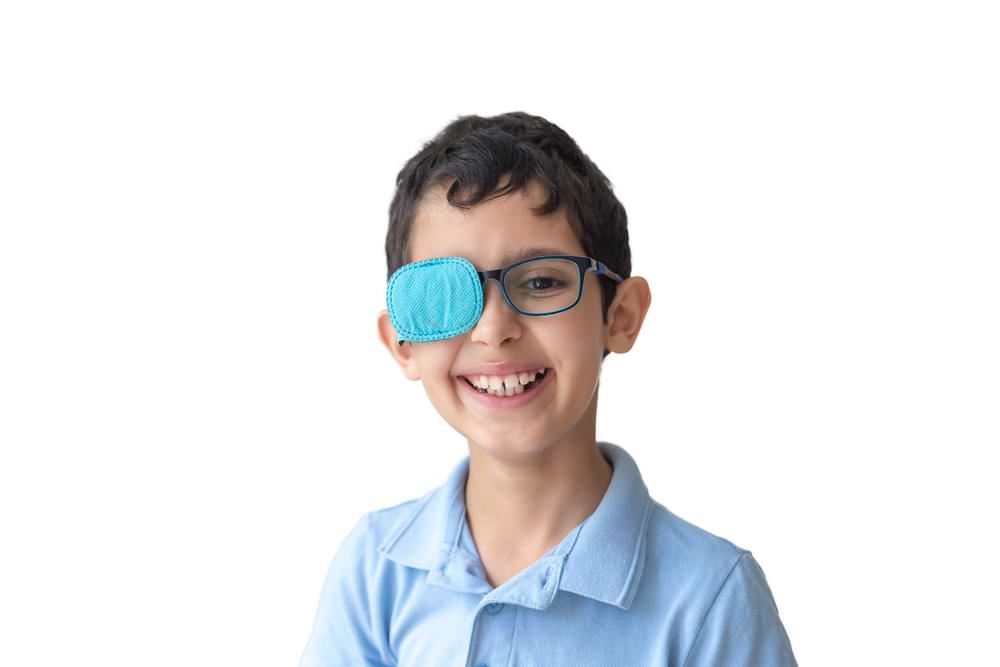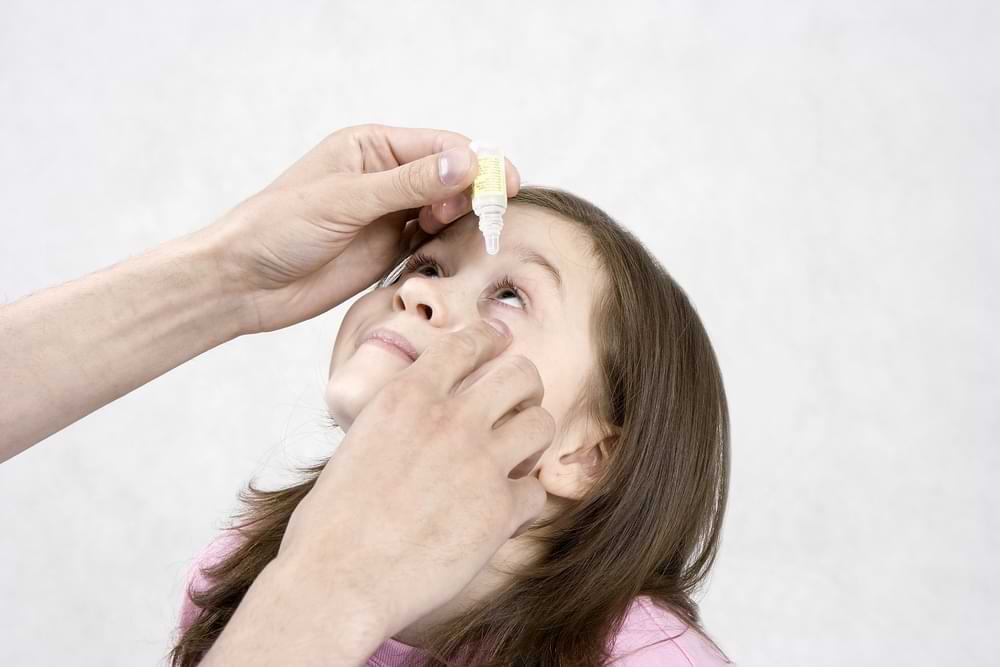Lazy Eye Treatment in Melbourne

Why do some children develop a so-called “lazy eye” (amblyopia), and what can be done about it? Could something as simple as patching really improve your child’s vision? Amblyopia is often misunderstood as a cosmetic issue, but it significantly impacts vision and daily life. In this article I’d like to explain lazy eye treatment in Melbourne, and how our eye care practice can help if your child is experience this vision problem.
I’m Minh Van Tran, the principal optometrist at VisionPro Optometrists. With over two decades of experience in eye care, I have dedicated my career to helping children and adults achieve their best possible vision. As a parent, I understand the concern you feel when your child faces vision challenges like lazy eye. My goal is to provide you with comprehensive, compassionate care and the latest treatment options to ensure your child’s vision is as strong as possible.
Proper vision care can significantly enhance your child’s academic performance and confidence. But delaying treatment can result in more complex and less effective interventions later.
Stay informed about your child’s eye health and explore your options further in this article. But if you are ready to take the first step towards better vision for your child – feel free to book an appointment at VisionPro today.
Key Takeaways:
- Early detection and treatment of lazy eye are crucial for preventing long-term vision problems.
- Multiple treatment options, including corrective eyewear, patching, and vision therapy, are available and effective.
- Regular eye exams and ongoing monitoring are essential to manage and prevent the recurrence of lazy eye.
Understanding Lazy Eye (Amblyopia)
What exactly is lazy eye, and why is it crucial to catch it early? Lazy eye, or amblyopia, is a condition where the vision in one eye doesn’t develop properly during childhood. This issue often stems from the brain and eye not working together correctly, leading to the brain favouring one eye over the other. In Melbourne, we see a significant number of cases among children, though it can also affect adults if left untreated.
The causes of lazy eye can vary. A common reason is muscle imbalance, known as strabismus, where the eyes cross or drift apart. Refractive errors, such as myopia (nearsightedness), hyperopia (farsightedness), and astigmatism, can also contribute. Structural problems like cataracts or droopy eyelids may obstruct vision, leading to amblyopia.
Identifying the symptoms early is vital. Parents should watch for signs such as one eye wandering inward or outward, poor depth perception, or squinting and closing one eye. Early diagnosis can significantly impact the effectiveness of treatment. Regular eye exams for children can help catch these issues before they become more severe.
Risk Factors and Complications
Who is most at risk of developing a lazy eye? Certain factors can increase the likelihood of amblyopia. Premature birth and being smaller than average at birth are significant risk factors. A family history of vision problems can also play a role, as can developmental disabilities. These factors can affect the visual development of a child, making early eye exams essential.
If lazy eye is not treated, the complications can be serious. Long-term vision impairment is a primary concern. The affected eye may never reach normal visual acuity, leading to difficulties in daily activities that require good vision. In severe cases, untreated amblyopia can result in permanent vision loss in the weaker eye. This is why early detection and treatment are so critical.
Ensuring that children receive comprehensive eye exams can help prevent these complications. Regular monitoring and timely intervention can preserve vision and improve overall eye health. By seeking lazy eye treatment for Melbourne children at an early age, we can avoid the long-term impacts that affect both vision and quality of life.
Diagnosis and Evaluation
How do we accurately diagnose a lazy eye? Comprehensive eye exams are essential for identifying amblyopia early. I recommend the first eye exam for children at around six months of age, with follow-ups at age three, and then every two years thereafter. These routine check-ups can catch potential issues before they develop into significant problems.
Several diagnostic tests help in evaluating amblyopia. Fixation and following tests assess how well a child’s eyes can follow objects. LEA Symbols and Snellen Chart tests measure visual acuity, helping to determine how clear the vision is in each eye. Additionally, binocular vision and depth perception tests evaluate how well the eyes work together and how accurately they can judge distances.
These tests provide a comprehensive overview of a child’s visual health, ensuring that any signs of amblyopia are detected early. Early detection allows for more effective treatment options, improving the chances of correcting the condition and preventing long-term vision problems.
Lazy Eye Treatment Options in Melbourne
The treatment of amblyopia often involves several approaches, each tailored to the specific needs of the patient. One of the most common methods is corrective eyewear. Glasses or contact lenses can significantly improve vision by correcting refractive errors such as myopia, hyperopia, and astigmatism. These corrective lenses help ensure both eyes receive a clear image, encouraging the brain to use the weaker eye more effectively.
Patching therapy is another well-established treatment. By covering the stronger eye with a patch, we force the brain to rely on the weaker eye, thereby strengthening its visual capabilities. The duration of patching therapy varies depending on the severity of the condition and the patient’s response to treatment. Typically, children might need to wear a patch for several hours a day over a few weeks or months. This method has proven to be highly effective in many cases.
Atropine eye drops are an alternative to patching. These drops are used in the stronger eye to blur its vision, encouraging the weaker eye to work harder. This method can be easier for some children to tolerate than wearing a patch. Atropine drops are particularly useful for treating mild to moderate amblyopia and have been shown to produce results comparable to patching therapy.
Each of these treatments aims to improve the visual acuity of the weaker eye, helping to balance the vision between both eyes. By addressing the underlying issues, we can significantly enhance the overall visual development and prevent long-term complications. If you are seeking lazy eye treatment solutions in Melbourne, we encourage you to contact VisionPro.
To learn more about treatment strategies for amblyopia, also watch the following video by Dr Joseph Allen from the Doctor Eye Health channel.
Advanced Treatment Methods
How can advanced treatments further aid in correcting a lazy eye? Beyond traditional methods like corrective eyewear and patching, several advanced treatments offer promising results for amblyopia. Vision therapy is one such option. This involves a series of exercises and activities designed to improve the coordination and function of the eyes. Through targeted tasks, such as focusing on specific objects, tracking moving items, and practicing eye alignment, vision therapy strengthens the weaker eye and improves its ability to work in unison with the stronger eye.
Innovative technologies have also made significant strides in amblyopia treatment. Virtual reality experiences are not only engaging for children but also highly effective. The VR games and exercises are designed to stimulate the weaker eye and improve visual processing. By combining fun with therapy, this method ensures better compliance and enhanced outcomes.
In some cases, surgery may be necessary to correct the underlying issues causing amblyopia, such as strabismus (crossed eyes). Surgical options aim to straighten the eyes and improve their alignment. This can be crucial when other treatments are insufficient. Types of surgeries include muscle resection or muscle recession, where the eye muscles are adjusted to achieve proper alignment. Surgery is typically considered when less invasive treatments have not yielded the desired results.
These advanced treatments offer hope for individuals with amblyopia, providing effective solutions that go beyond traditional methods. By leveraging modern technology and techniques, we can achieve better visual outcomes and enhance the quality of life for our patients.
Managing and Supporting Treatment at Home
How can parents support their child’s lazy eye treatment at home? Encouraging adherence to treatment plans is crucial. As a parent, it’s important to make patching therapy or the use of atropine drops a part of the daily routine. Positive reinforcement, such as rewards and praise, can motivate children to stick with their treatment.
Engaging the weaker eye through fun activities can also help. Reading, drawing, and playing visually stimulating games can strengthen the eye while making the process enjoyable. Balancing screen time with outdoor play ensures a variety of visual experiences, promoting better eye health.
With consistent support and encouragement, children are more likely to succeed in their treatment, leading to improved vision outcomes.

Preventing Lazy Eye Recurrence
How can we prevent lazy eye from coming back? Regular follow-ups are essential. Consistent monitoring ensures any regression is caught early. Adjusting treatment plans as necessary helps maintain progress and address any new issues.
Addressing underlying causes like strabismus and refractive errors is also crucial. Correcting these issues can prevent the recurrence of amblyopia. Ongoing management of eye health, including regular eye exams, supports sustained improvements.
By staying vigilant and proactive, we can ensure that the gains made in treating lazy eye are preserved, providing long-term benefits to the patient’s vision.
Impact of Untreated Lazy Eye
What happens if lazy eye is left untreated? The consequences can be significant. Untreated amblyopia can lead to permanent vision impairment in the weaker eye. This affects daily activities, such as reading and classroom learning, posing academic challenges for children. The social and psychological impacts are also considerable, as children might struggle with confidence and self-esteem due to their visual limitations.
Athletic activities can be hampered too. Impaired depth perception makes sports and physical activities difficult, affecting coordination and overall performance. Addressing lazy eye early prevents these long-term complications, ensuring a better quality of life.
Importance of Early Intervention
Why is early intervention so crucial for lazy eye? Early treatment can significantly improve vision outcomes. When amblyopia is addressed promptly, the weaker eye has a better chance of developing normal vision. This reduces the risk of long-term complications and permanent vision loss. Early intervention also means less intensive treatment, as the condition is easier to correct in its initial stages.
Treating lazy eye early sets the foundation for a lifetime of better vision. It helps children perform better academically and socially, ensuring they don’t face unnecessary challenges due to poor eyesight. Early action is key to preserving and enhancing visual health.
CONCLUSION
Lazy eye, or amblyopia, is a condition where one eye has reduced vision due to abnormal development, often starting in infancy. Untreated lazy eye can lead to long-term vision impairment, highlighting the importance of regular eye exams for children. Vision issues can hinder your child’s learning, making school activities more challenging and frustrating.
Lazy eye treatment options in Melbourne are available. So act now to secure your child’s visual health and well-being by booking an eye care consultation.
Scheduling an eye exam appointment is simple and straight forward.
Click on the “BOOK AN APPOINTMENT” button OR call either our St. Albans (03) 9364 5509 or Footscray (03) 9687 8787 optometry practices.

Minh gained his Bachelor of Optometry in 2000, and his Certificate in Ocular Therapeutics (ACO) in 2016.
He started VisionPro Optometrists in 2008 and has been Principal Optometrist ever since, working in both the Footscray and the St Albans practices.
Minh is a member of Optometrist Association Australia and the ACO. He always strives to achieve the highest standard of professionalism when delivering eyecare to all his patients.
Minh’s special areas of interest include ocular diseases and management, children’s vision and contact lens fitting. Minh enjoys travelling and reading in his spare time.
